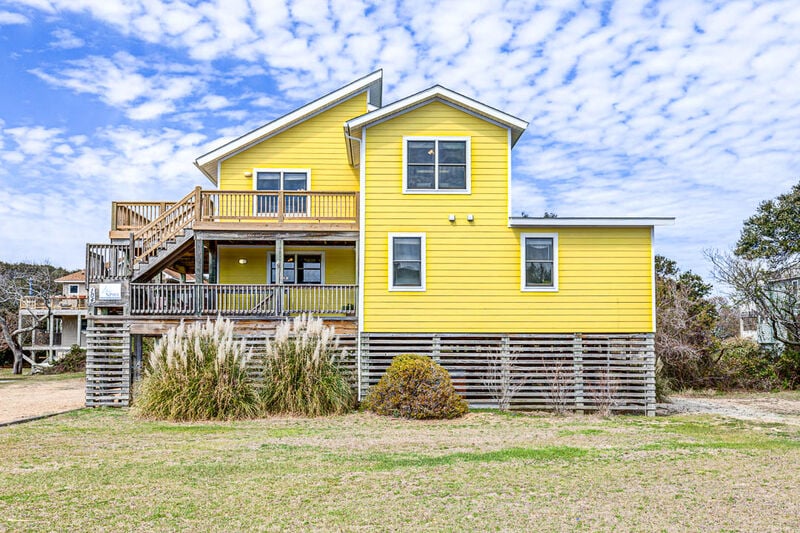
From early settlers to the birth of aviation, there's so much history in the Outer Banks that it's one of the most museum-rich areas in the country.
Wright Brothers National Memorial
Wilbur and Orville Wright, self-taught mechanics from Dayton, Ohio, came to Kitty Hawk and changed the world when they invented the first successful airplane in 1903. At the museum and memorial in Kitty Hawk, visitors can walk up the steep hill to see where the brothers made history with their first flight. In fact, the First Flight Centennial Pavilion has a fascinating review of aviation technology that you won't want to miss.
Roanoke Island Festival Park
Roanoke Island Festival Park serves as a Wayback Machine for the Outer Banks. The first English settlers arrived on the islands as early as 1500, during the reign of Elizabeth Tudor. The park is an indoor and outdoor interactive complex of exhibits and activities that explain what life was like on the barrier islands during its days as a British colony.
Chicamacomico Lifesaving Station
Don't overlook this museum with the funny name. Chicamacomico Lifesaving Station and Museum is one of the most popular and beloved museums in the Outer Banks. The Lifesaving Station honors the men who worked the lifesaving stations along the seashore. These men rescued hundreds of shipwrecked sailors over the years. Their journals, uniforms, gear, and primary residence are on display.
Ocracoke Preservation Society
The Ocracoke Preservation Society is housed in a historic home known as the David Williams House Museum. Built in the late 1800s, the home was restored by the Ocracoke Preservation Society so that visitors could see what life was like for Bankers in the 19th century. There's even a documentary about the "Ocracoke Brogue," an accent particular to those born and raised on Ocracoke.One of the real delights of the museum is the summer Porch Talks. Wander up to the porch, take a seat on the steps, and listen to local experts recount the legends, mysteries, and exciting tales of the Outer Banks.
Outer Banks History Center
On the grounds of Roanoke Island Festival Park, you'll find the wonderfully academic Outer Banks History Center. If you are a history buff, a science nerd, a weather bug, or if you trace your roots to the Bankers, you will enjoy getting lost in this facility. The center is home to more than 300,000 documents, photos, maps, and books about the Outer Banks, some dating back to the 1500s.
Corolla Wild Horse Museum
A must-see before or after looking for wild horses on the beaches of Corolla, the Corolla Wild Horse Museum illustrates the history of the Outer Banks' most famous equines. You'll also see videos and aerial maps of where the horses are typically seen. There are special exhibits for kids, but the real draw is the Wild Horse Gift Shop, where you can find a keepsake to help you remember your magical visit with the legendary residents.
Whalehead in Historic Corolla
In the 1920s, it was all the rage for wealthy city dwellers to build sprawling, luxurious homes where they could invite their friends for the summer. Whalehead is a 21,000-square-foot former retreat of one such family. It's fun to imagine what it would have been like to be a guest at Whalehead in the lavish Roaring Twenties.
Island Farm
The Island Farm in Manteo is a delightful living history museum that replicates farm life on the coast in the mid-1800s. Farm animals such as cows, chickens, sheep, oxen, and Banker ponies freely wander the grounds. There's also a farmhouse, a dairy, and other historic buildings to take in.
Outer Banks Center for Wildlife Education
While you're in Corolla, stop by the Outer Banks Center for Wildlife Education. This is a massive interpretive center with something to engage all ages. The crown jewel is an 8,000-gallon aquarium full of a vast variety of fish. The ocean is a significant character in the Outer Banks, and the Wildlife Education Center is the ideal place to get to know it better.
Graveyard of the Atlantic
The clashing currents and dangerous shoals off Cape Hatteras produce some of the most violent storms and treacherous sailing waters on the East Coast. This deadly combination earned the waters the nickname "Graveyard of the Atlantic." This museum features artifacts from the hundreds of shipwrecks that fell prey to Diamond Shoals. There's even a bell from a legendary ghost ship, the
Carol Deering. This is an educational and entertaining stop for both kids and adults.Whether you are interested in maritime history, nature, pirates, or early colonial life, the Outer Banks has a museum for you. When you're ready for a break from the beach, take time to spend a relaxing hour or two learning more about one of the most historically significant areas of the country.
 From early settlers to the birth of aviation, there's so much history in the Outer Banks that it's one of the most museum-rich areas in the country.
From early settlers to the birth of aviation, there's so much history in the Outer Banks that it's one of the most museum-rich areas in the country. From early settlers to the birth of aviation, there's so much history in the Outer Banks that it's one of the most museum-rich areas in the country.
From early settlers to the birth of aviation, there's so much history in the Outer Banks that it's one of the most museum-rich areas in the country.








